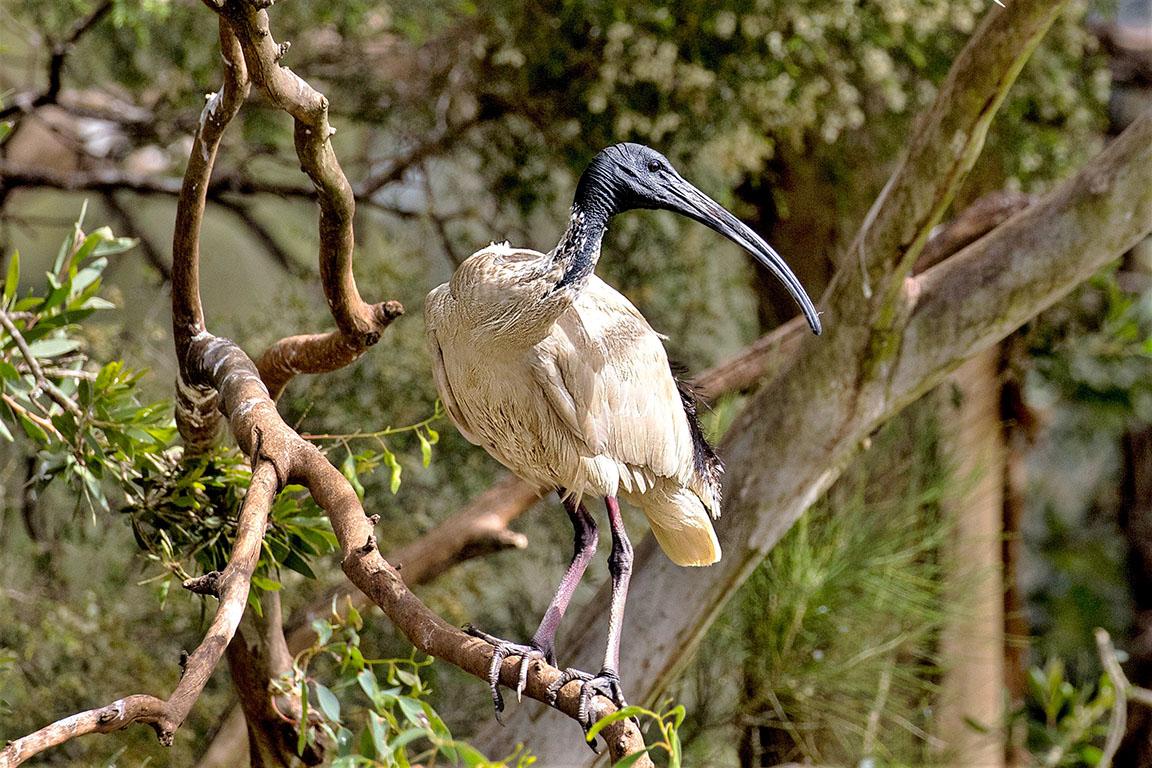Australian Ibis

Toowoomba, Queensland
The Australian ibis is widespread in the north, east and south-west of Australia.
Habitat
The natural habitats of the Australian ibis are swamps, floodplains, lagoons and grasslands but since the 1970's it has become a common resident in city parks, gardens and rubbish dumps.
Feeding
The Australian ibis eats aquatic and terrestrial invertebrates, amphibians and human scraps with crayfish and mussels top of the menu extracted from the mud through digging with its long beak. It opens mussels by hammering the hard shell against a rock.
Breeding
Male and female ibis construct a shallow platfrom made of twigs, reeds and grasses and located in a tree close to water. They often nest in colonies close to other birds such as cormorants, egrets and herons. Both parents incubate two to five dull white eggs and share the rearing of the atricial chicks.
Wildfile Specials
- The Macquarie Marshes in New South Wales had a breeding population of 22000 birds in 1998. Because of a combinatio of drought and river regulaton, none have bred there since 2000.
- Australian ibis have become a problem in some urban areas because of their strong smell, messy scavenging, nesting in inappropriate places and habit of stealing food from picnickers.
- Australian ibises are knicknamed "bin chickens".
- Local authorities have culled some populations.
- Ibises eat cane toads despite their defensive toxins. They force them to secrete the toxins by shaking them and then washing the toads in water. This a learnt behaviour unique to ibises as other birds avoid cane toads because of their foul taste.
- In 2017 the ibis came second in a Bird of the Year poll.
- The Australian ibis may be the mascot for the 2032 Brsbane Olympic Games.
.